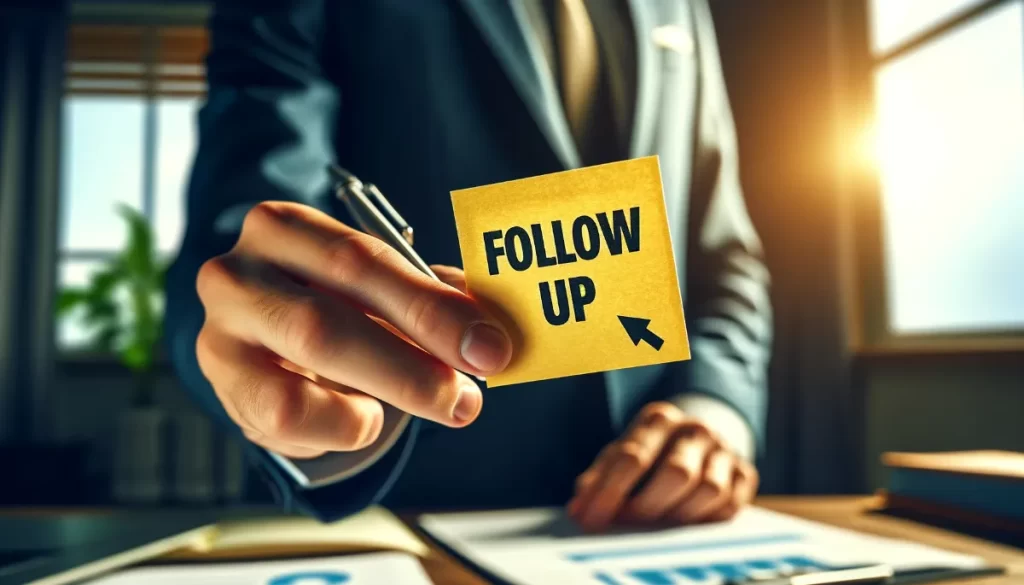
Follow-up activities are crucial for any business. Without it, business does not expand.
In this article, we’ll explain why good follow-up is more than just being polite – it’s key to creating strong, lasting business relationships. We’ll also show how it can really help your business grow, and share some effective, easy-to-use strategies that make every conversation important.
- What is Follow-Up?
- The Importance of Follow-Up
- Benefits of Follow-Up
- 1. Expanding Profits:
- 2. Building a Base of Loyal Customers:
- 3. Feedback for Development:
- Strategies and Timing
- Timing Mistakes
- Lack of Personalization
What is Follow-Up?
In business, especially in a culturally rich and nuanced market like Japan, “follow-up” refers to the ongoing interactions you have with someone after an initial meeting, deal, or agreement. It’s not just about sending a thank-you email or making a courtesy call. Follow-up is about maintaining and nurturing a relationship over time.
The Importance of Follow-Up
In our experience, those new to business in Japan often mistakenly assume that deals can be struck immediately upon meeting. However, this is not the case. Without establishing a certain level of relationship, you are unlikely to receive requests for quotes or be involved in shared projects. For instance, imagine you come to Japan seeking clients and participate in a trade show. You may collect many business cards and have promising conversations. However, without proper after-event follow-up, potential clients who spoke of sharing projects will not take any action, leading to missed opportunities.
Even with existing customers, follow-up plays a crucial role in enhancing customer satisfaction and leading to repeat purchases. Without proper follow-up, a business relationship might end after a single transaction, failing to build a lasting connection.
This holds true for new and existing customers as well as partners, highlighting the universal importance of follow-up.

Benefits of Follow-Up
1. Expanding Profits:
The probability of selling to an existing customer is 60-70 percent. The probability of selling to a new prospect is 5-20 percent.
Quoted by https://smallbiztrends.com/2023/12/customer-retention-statistics.html
2. Building a Base of Loyal Customers:
In Japan, where customers often bring in more customers and word-of-mouth is crucial, treating customers well is paramount. Even if there’s no immediate issue, a simple email asking if everything is okay can significantly improve impressions.
3. Feedback for Development:
Unexpected comments or insights from customers can be a business opportunity, revealing areas for improvement and new ventures.
Strategies and Timing
For new clients, it’s essential to take action immediately after exchanging business cards. For instance, always attach documentation, even if the connection doesn’t seem likely to result in business. If there’s potential for business, set up a meeting. Ideally, this should be done the next day, but certainly within three days to ensure you’re not forgotten.
For encounters at events, aim to follow up with an email within a week.
With existing clients, providing quality content regularly via newsletters or individual follow-up activities (emails, calls, meetings) is beneficial. While the frequency may vary depending on the market and product, at least annual communication is advisable.
Timing Mistakes
In Japan, the practice of sending New Year greetings is common. While this can be a good opportunity for businesses you have a good relationship with, it might be seen as bothersome during this busy period for those you aren’t close to. Also, being too persistent in follow-up can be off-putting.

Lack of Personalization
Efficiency is important, but mass emails for the sake of follow-up are a no-go. While newsletters are acceptable, non-personalized communication is often not well-received. It takes more effort, but personalizing content is essential.
